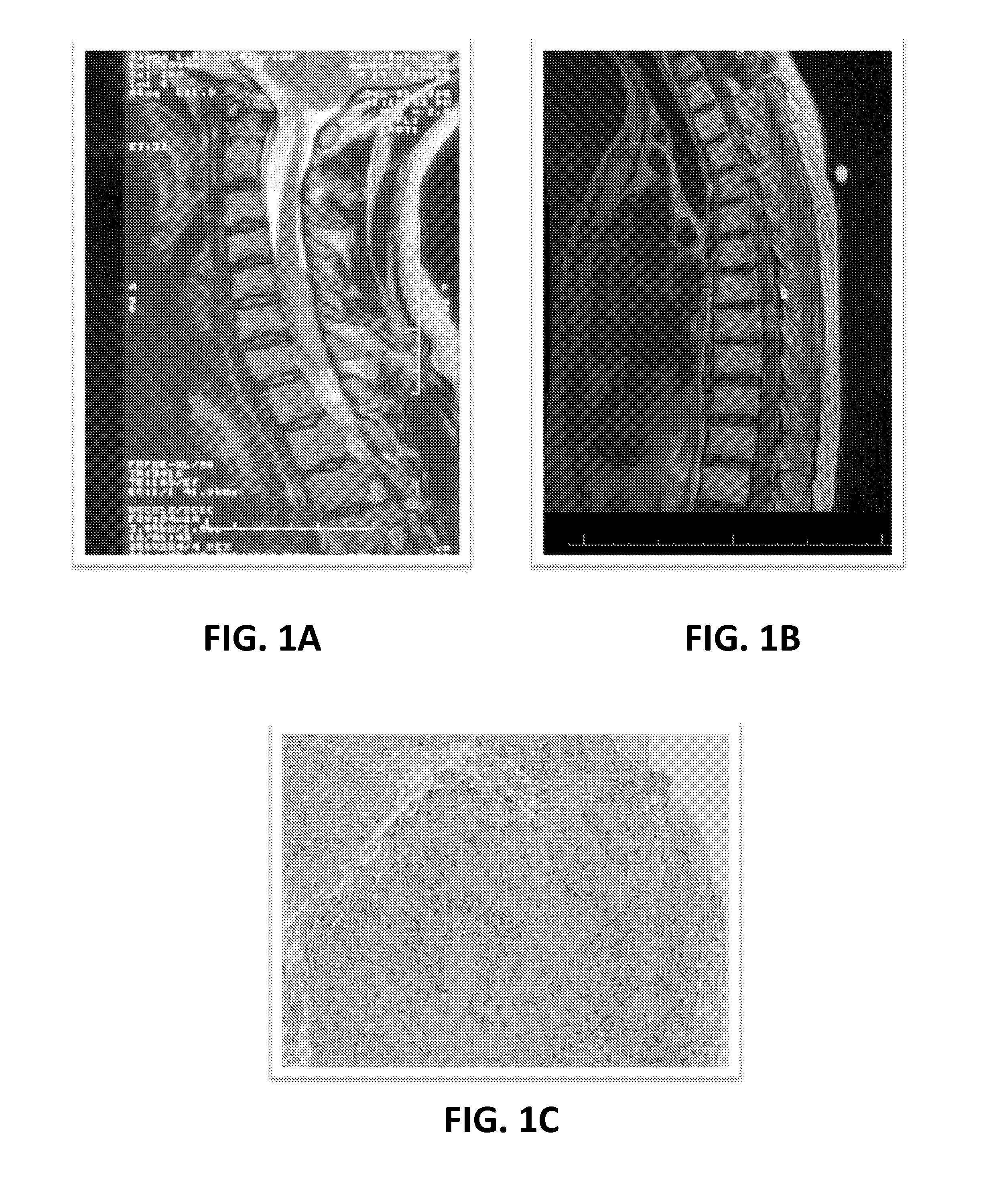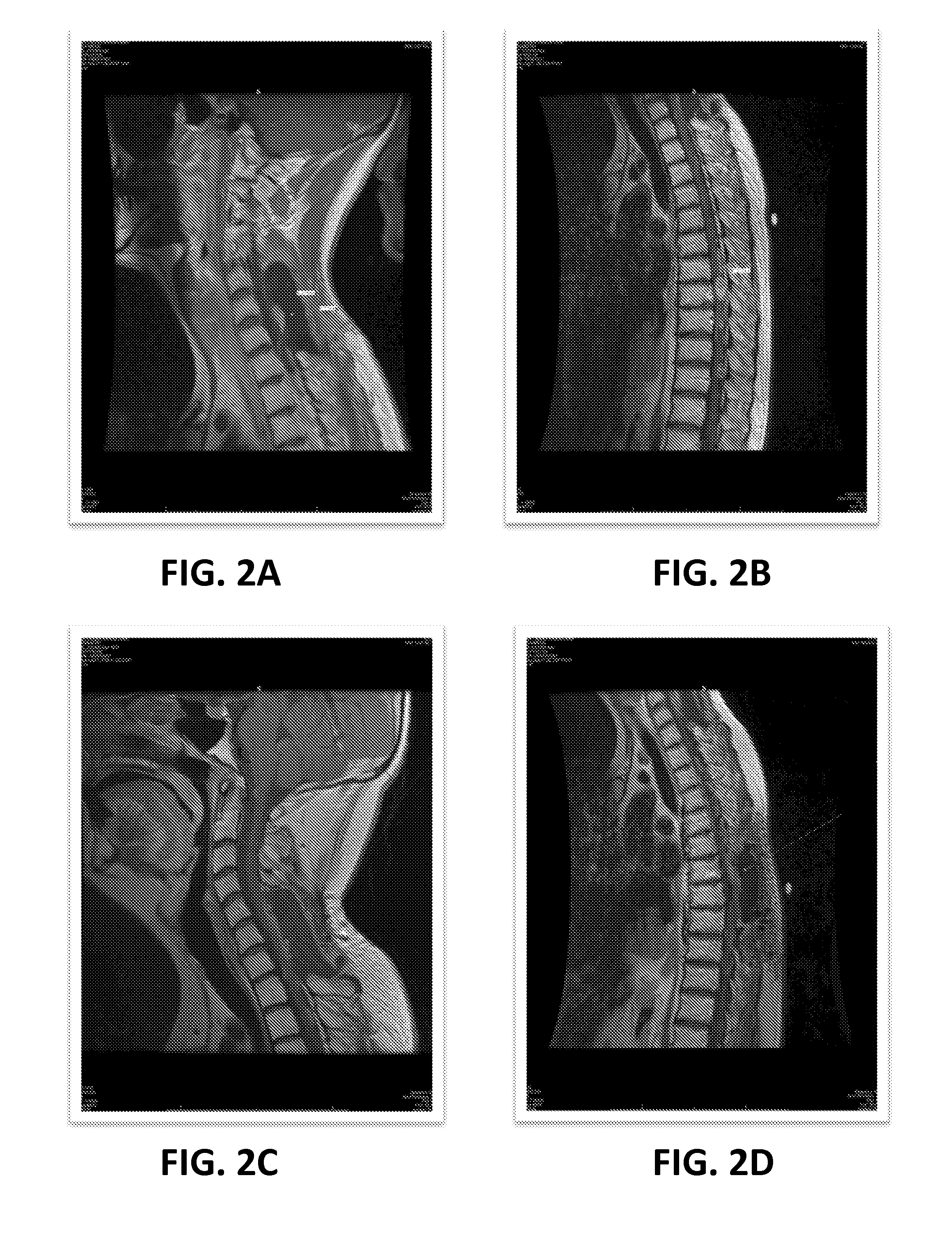Methods of screening chemotherapeutic agents and treating cancer
- Summary
- Abstract
- Description
- Claims
- Application Information
AI Technical Summary
Benefits of technology
Problems solved by technology
Method used
Image
Examples
example 1
Selection of Chemotherapeutic Agent and in Subject with Intradural, Extramedullary Anaplastic Recurring Spinal Ependymoma, WHO Grade III
[0080]Intradural extramedullary ependymomas are rare, and predominately occur in women in the 5th decade of life. The tumors present with pain, paresthesia, and paraparesis, and account for 60% of all intramedullary tumors with 50% of them arising from the filum terminale. From a review of the literature, there have recently been 19 reported cases of primary intradural and extramedullary spinal ependymomas in patients ranging from 24 to 69 years old. Importantly, the clinical condition of the patients temporarily improved in 11 patients, remained stable in 2, and worsened (recurrence or progression) in 6 patients who underwent a combination of surgery, radiation and chemotherapy treatments.
[0081]In light of these varying outcomes, it has been observed that, in several types of human cancer, only a subset of cancer cells within each tumor is capable ...
example 2
Selection of Chemotherapeutic Agent and Treatment of 5-Month Old Subject with Anaplastic Ependymoma WHO Grade III
[0097]To further assess the ability of the presently-disclosed methodology to identify chemotherapeutic agents capable of treating both cancer stem-like cells and bulk cancer cells in a subject diagnosed with cancer, a cancer cell sample was obtained from a 5-month old female subject diagnosed with anaplastic ependymoma, WHO grade III. Similar to the experiments described herein above, the cancer cell sample was initially cultured as a suspension and the cancer cells were immunophenotyped by flow cytometer using anti-CD133 (Milteny Biotech, Auburn, Calif.), -CD34 (Milteny Biotech, Auburn, Calif.), -CD38 (Milteny Biotech, Auburn, Calif.), -CD44 (BD Bioscience, Sparks, Md.), -CD24 (Milteny Biotech, Auburn, Calif.), -CXCR4 (Milteny Biotech, Auburn, Calif.), -Oct3 / 4 (BD Bioscience, Sparks, Md.), and -Nanog (BD Bioscience, Sparks, Md.). The ependymoma cells were found positive...
example 3
Selection of Chemotherapeutic Agent and in Subject with IDH-1 Negative Glioblastoma, WHO Grade IV
[0099]A cancer cell sample was also obtained from a subject diagnosed with isocitrate dehydrogenase-1 negative glioblastoma to further assess the ability of the presently-disclosed methodology. Again, similar to the experiments described herein above, the glioblastoma cancer cell sample was initially cultured as a suspension and the cancer cells were immunophenotyped by flow cytometer using anti-CD133 (Milteny Biotech, Auburn, Calif.), -CD34 (Milteny Biotech, Auburn, Calif.), -CD38 (Milteny Biotech, Auburn, Calif.), -CD44 (BD Bioscience, Sparks, Md.), -CD24 (Milteny Biotech, Auburn, Calif.), -CXCR4 (Milteny Biotech, Auburn, Calif.), -Oct3 / 4 (BD Bioscience, Sparks, Md.), and -Nanog (BD Bioscience, Sparks, Md.). The glioblastoma cells were found positive to CD133 (9.8%) CD44 (72.4%), CD24 (29.7%), CXCR4 (75%), Oct3 / 4 (13.6%), and Nanog (0.2%) when compared to an isotype control antibody, a...
PUM
| Property | Measurement | Unit |
|---|---|---|
| Time | aaaaa | aaaaa |
| Concentration | aaaaa | aaaaa |
| Cytotoxicity | aaaaa | aaaaa |
Abstract
Description
Claims
Application Information
 Login to View More
Login to View More - R&D
- Intellectual Property
- Life Sciences
- Materials
- Tech Scout
- Unparalleled Data Quality
- Higher Quality Content
- 60% Fewer Hallucinations
Browse by: Latest US Patents, China's latest patents, Technical Efficacy Thesaurus, Application Domain, Technology Topic, Popular Technical Reports.
© 2025 PatSnap. All rights reserved.Legal|Privacy policy|Modern Slavery Act Transparency Statement|Sitemap|About US| Contact US: help@patsnap.com



